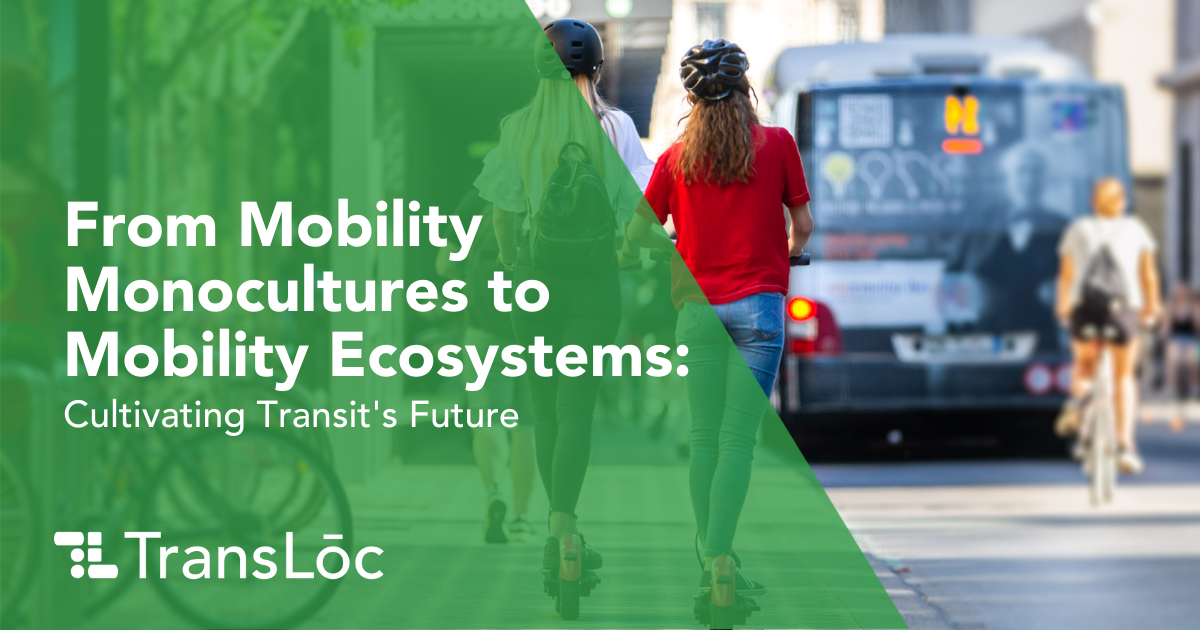
On-demand microtransit is more popular than ever before. While transit agencies have operated demand-response services for decades, the rapid development of mobile booking technologies, the allure of flexible mobility solutions, and the COVID-19 pandemic have increased the number of on-demand microtransit pilots in communities across the world.
New on-demand microtransit services like the one announced in Laguna Beach, California have popped up just in the last month. This isn’t surprising given the host of benefits on-demand microtransit provides transit agencies and the communities they serve. We’ve covered these benefits at length previously, but here’s a brief recap:
- Accessibility: The Freedom of Movement for All: On-demand microtransit addresses the first-mile/last-mile conundrum — or how riders begin and end their journey on public transportation — by getting people to and from bus stops and train stations.
- Flexibility: Adapting to Community Needs: On-demand microtransit addresses a challenging reality for transit agencies.They must balance meeting community needs with constrained budgets while providing a flexible and dynamic mobility option to meet riders where they are, and take them to where they want to go.
- Community Health: In Light of COVID-19: Concerns about vehicle sanitation and virus exposure remain high among U.S. working adults. For riders who are not ready to board a bus full of passengers, on-demand microtransit can provide a reduced-risk alternative.
Still, many transportation planners, transit users, and enthusiastic urbanists are concerned about the long-term impacts of replacing fixed-route service with on-demand microtransit.
All eyes are on the Denton County Transit Authority (DCTA), who replaced six of their eight fixed routes with on-demand microtransit back in September. In a detailed blog post responding to DCTA’s decision, TransitCenter outlined concerns about fare equity, scalability, labor rights, and long-term impacts to mobility. These concerns are valid, as on-demand microtransit is not a one-size-fits-all mobility solution for every unique need of riders and transit operators.
However, this doesn’t mean on-demand microtransit should be completely abandoned. When combined with fixed-route services and alternative transportation options like bicycling and walking, the benefits for riders, transit agencies, and entire communities remain strong.
We must get beyond our mobility monoculture mentality.
A mobility monoculture, like an agricultural monoculture, is based on an all-or-nothing approach. If a traveller is presented with only one option — whether it’s a car, bus, or on-demand microtransit ride — they are forced into a mobility monoculture.
To create truly dynamic transportation options, we must abandon the mobility monoculture and embrace mobility ecosystems. Mobility ecosystems take advantage of multiple modes of transportation including fixed route, on-demand microtransit, micromobility, and bike and pedestrian infrastructure. Unlike mobility monocultures, mobility ecosystems are robust, flexible, and accessible. Mobility ecosystems allow each mode to play to its strengths and support the broader transit network, giving riders greater mobility choice and allowing transit providers to make flexible and efficient decisions about how their services evolve over time.
At TransLoc, we’ve witnessed the value of flexible mobility ecosystems through our work with a number of customers.
Memphis Area Transit Authority (MATA) recently expanded their OnDemand “Ready!” zones on the periphery of their service area. These Ready! zones provide reliable and affordable mobility solutions for residents and workers in outlying low-density areas that are difficult to reach with fixed-route buses. These zones also serve as first-mile-last-mile connections to MATA’s central fixed-route services. Leveraging the power of Ford’s Mobility Service Modeler* microtransit simulation tool, we helped MATA navigate a successful launch and plan for future expansion.
Similarly, Napa Valley Transit Authority (NVTA) used the mobility ecosystem approach to relaunch their core fixed-route bus. Our Planning and Design Services team analyzed a year’s worth of on-demand microtransit data to create mobility heatmaps and design new bus routes to reach the greatest number of riders. NVTA’s buses now serve high-travel corridors, while on-demand microtransit extends mobility to riders in the outskirts of the city.
Both MATA and NVTA realized that the whole can be greater than the sum of its parts in transportation. By doubling down on fixed routes in core areas, and operating on-demand microtransit zones in the periphery, both agencies were able to create healthy mobility ecosystems using limited resources and ensuring quality of service for riders.
Are mobility ecosystems flourishing in your community? Or do you feel like you’re forced into a mobility monoculture? We’d love to hear your experience, and workshop ways to expand the ecosystem approach to cities across the US and beyond. To join the conversation, we’d love to see you in Los Angeles on November 18th at our CoMotion workshop, Cultivating Our Mobility Ecosystem: How to Promote Multimodal Harmony, at 12:15 p.m. PT. If you can’t make it to Los Angeles, then contact us for a quick conversation about how we can bring vibrancy to your community’s mobility monoculture.
*On March 1, 2022, global technology company Modaxo acquired TransLoc from Ford Motor Company. TransLoc is no longer affiliated with Ford or any Ford properties.